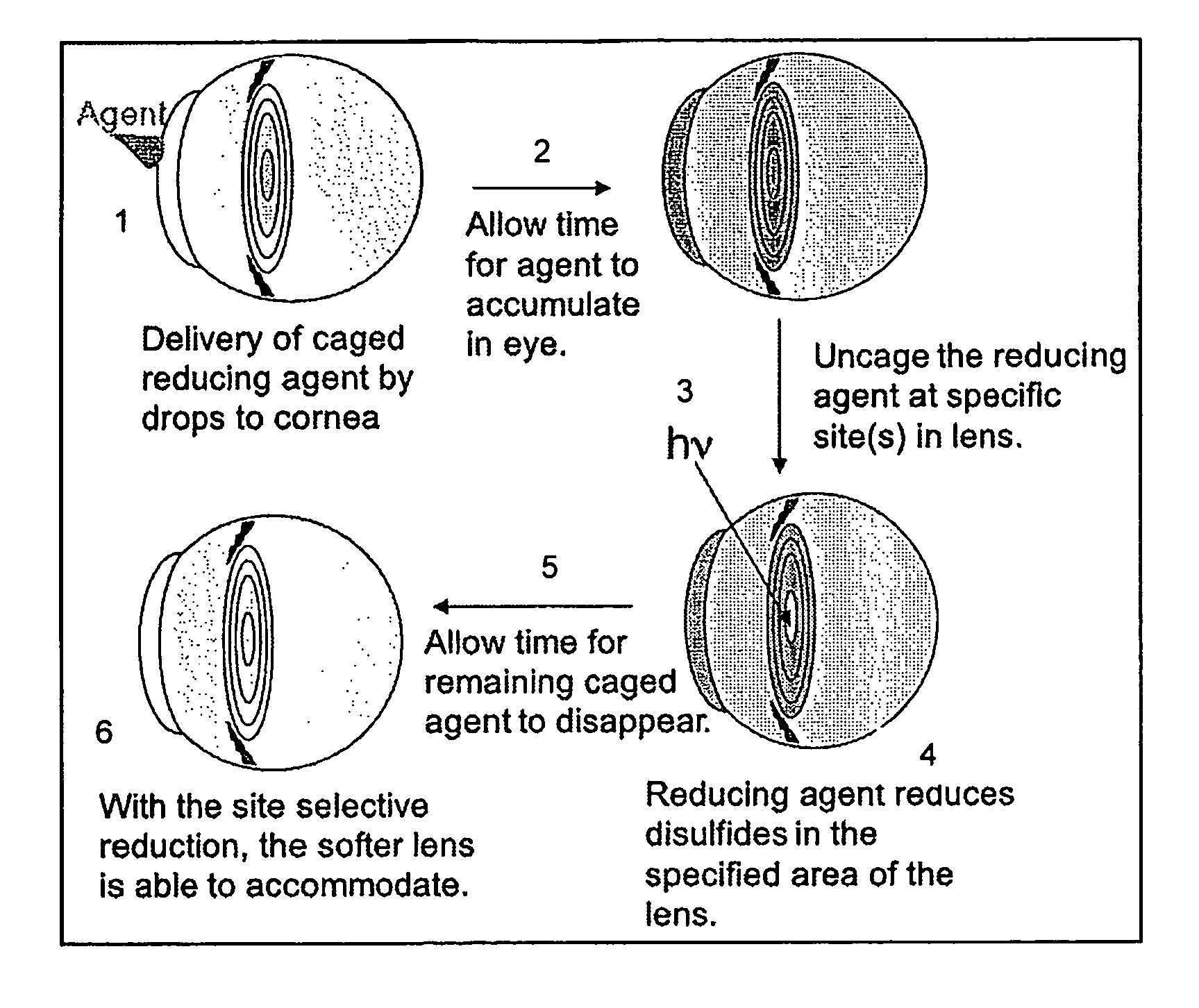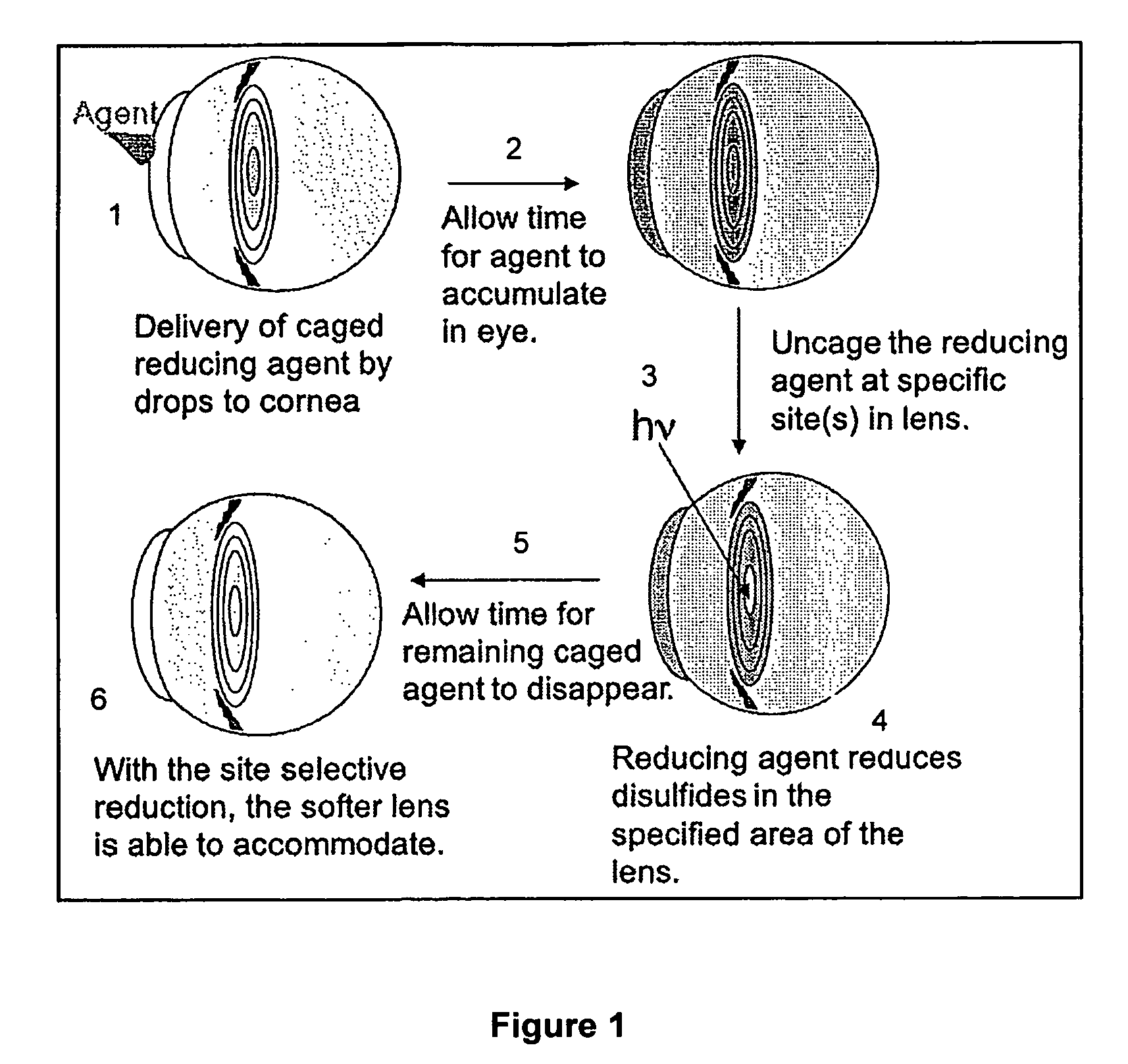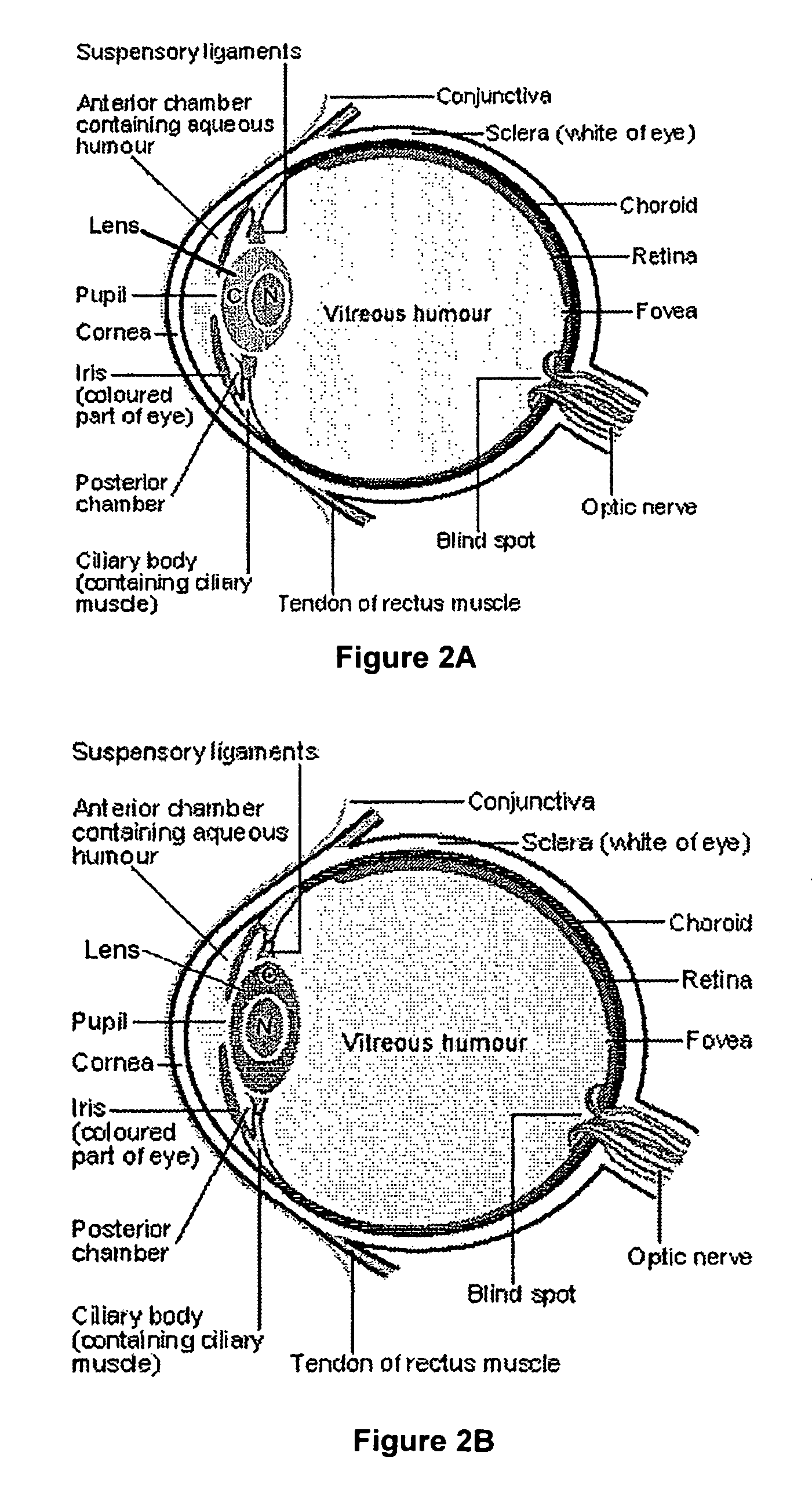Caged mercaptan and seleno-mercaptan compounds and methods of using them
a technology of mercaptan and selenomercaptan, which is applied in the field of caged mercaptan and selenomercaptan compounds and methods of using them, can solve the problems of increasing the risk of cataract, and destroying the balanced redox state required to maintain transparency, so as to increase the accomodative amplitude, increase or maintain lens elasticity, and reduce or maintain lens opacity.
- Summary
- Abstract
- Description
- Claims
- Application Information
AI Technical Summary
Benefits of technology
Problems solved by technology
Method used
Image
Examples
example 1
Synthesis of Cage: 4-Chloromethyl-7-hydroxy-2H-chromen-2-one (1)
[0103]
[0104]Ethyl 4-chloroacetoacetate (10.0 mL, 73.0 mmol) was added dropwise to a cold (ice bath) solution of resorcinol (8.0 g, 73.0 mmol) in concentrated H2SO4 (100 mL). The cooling bath was removed, and the reaction mixture was stirred at room temperature overnight (15 h), then poured onto ice (500 mL) and stirred until all ice had melted. The precipitate was collected by filtration and washed with water (200 mL). The solid was dissolved in hot EtOH:ligroin (4:1, 100 mL), filtered, and the filtrate was kept in the freezer (−20° C.) for 3 h. The solid was collected by filtration, washed with ligroin (3×10 mL), and dried to give 4-Chloromethyl-7-hydroxy-2H-chromen-2-one (1) as a pale white solid (12.2 g, 79%).
example 2
Synthesis of Exemplary Caged Compound: (R)-(+)-(7-Hydroxy-2-oxo-2H-chromen-4-yl)methyl 5-(1,2-dithiolan-3-yl)pentanoate (2)
[0105]
[0106]To a room temperature solution of (R)-(+)-1,2-dithiolane-3-pentanoic acid (2.66 g, 12.9 mmol) and 4-Chloromethyl-7-hydroxy-2H-chromen-2-one (1) (2.40 g, 11.4 mmol) in anhydrous benzene (160 mL) was added 1,8-diazabicyclo[5.4.0]undec-7-ene (3.8 mL, 25 mmol) in one portion. The reaction mixture was heated to 80° C. (oil bath temperature) for 1 h, cooled to room temperature, then quenched with aqueous 15% citric acid (200 mL). The resulting suspension was filtered, and the collected insoluble material was suspended in acetone (100 mL), sonicated for 60 s, then filtered onto a bed of silica gel (˜10 g). The suspension-sonication-filtration step was repeated a second time. Concentration of the filtrate under reduced pressure followed by flash column chromatography (1% MeOH in CH2Cl2) provided the desired product as a pale yellow powder (1.08 g, 25%).
example 3
Synthesis of Exemplary Caged Compound: 3,3′-Disulfanediylbis(1-((7-hydroxy-2-oxo-2H-chromen-4-yl)methoxy)-1-oxopropan-2-aminium chloride (3)
[0107]
[0108]A solution of 1 (4.00 g, 19.0 mmol), (Boc-Cys-OH)2 (2.60 g, 5.90 mmol), KF (2.06 g, 35.40 mmol), and anhydrous DMF (20 mL) was stirred at room temperature for 3 days. The mixture was concentrated, and the residue was dissolved in EtOAc (100 mL), washed with saturated aq. NaHCO3 (50 mL), brine (50 mL), and dried over MgSO4. The drying agent was removed by filtration, and the filtrate was concentrated under reduced pressure. A suspension of the resulting orange solid (4.65 g, 5.90 mmol) in anhydrous CH2Cl2 (20 mL) and anhydrous 1,4-dioxane (40 mL) was treated with 4 M HCl in 1,4-dioxane (40 mL). The reaction mixture was stirred at room temperature for 16.5 h and concentrated under reduced pressure. Diethyl ether (200 mL) was added, and the resulting suspension was stirred for 30 min. The yellow solid was collected by filtration, washed...
PUM
| Property | Measurement | Unit |
|---|---|---|
| wavelength | aaaaa | aaaaa |
| molecular weight | aaaaa | aaaaa |
| diameter | aaaaa | aaaaa |
Abstract
Description
Claims
Application Information
 Login to View More
Login to View More - R&D
- Intellectual Property
- Life Sciences
- Materials
- Tech Scout
- Unparalleled Data Quality
- Higher Quality Content
- 60% Fewer Hallucinations
Browse by: Latest US Patents, China's latest patents, Technical Efficacy Thesaurus, Application Domain, Technology Topic, Popular Technical Reports.
© 2025 PatSnap. All rights reserved.Legal|Privacy policy|Modern Slavery Act Transparency Statement|Sitemap|About US| Contact US: help@patsnap.com



